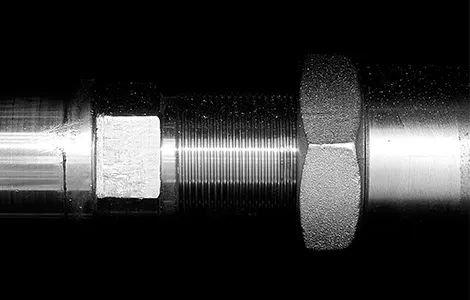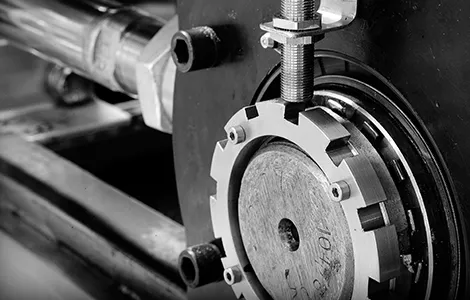The Role of Steel Belts in Minimising Energy Costs in Manufacturing
July 08, 2025
Energy efficiency is no longer a peripheral concern - it’s a core metric of operational performance. As manufacturers continually seek to reduce overheads while meeting environmental expectations, the focus on energy saving technologies has intensified. One such solution lies in an often underappreciated component: the steel belt.
Steel belting offers a powerful combination of mechanical precision and thermal performance, making it a key contributor to lowering energy consumption across a plethora of industrial processes. From food production, all the way to chemical processing, manufacturers are turning to steel belts not just for their durability, but for their convenient ability to streamline energy use.
Reduced Friction, Reduced Load
A primary factor behind energy loss in conveyor systems is mechanical friction. Traditional belting materials - such as plastic or fabric-based systems - often produce higher levels of friction as they interact with rollers and drive systems. Steel belts, by contrast, provide a smooth, rigid surface that minimises contact resistance.
This lower ‘coefficient of friction’ reduces the power required to drive the belt, particularly in long conveyor runs or high-speed applications. In turn, motors operate more efficiently, and gear wear is drastically reduced—both of which contribute to lowering your energy bills and reducing maintenance interventions.
Superior Heat Transfer Capabilities
In applications where temperature control is essential like baking, chemical pastillation, or cooling lines, steel belts offer a clear advantage. Their high thermal conductivity enables even and rapid heat transfer, reducing the time and energy required to heat or cool products.
This is particularly valuable in continuous manufacturing environments where consistent temperatures are needed over long periods. For example, in food manufacturing, steel belting in oven and cooling systems ensures ultra precise thermal regulation, improving process stability while reducing the energy required for heating and chilling.
Extended Lifespan, Lower Replacement Energy Footprint
Energy savings aren’t solely a product of day-to-day operational gains. The extended service life of steel belts plays a not so insignificant role in reducing the indirect energy costs associated with belt replacement and disposal. Unlike polymer-based belts that may require frequent replacement due to stretching, tearing, or heat degradation, steel belts can operate reliably for years, even in demanding environments.
Longer life cycles mean fewer production stoppages, less frequent manufacturing of new belts, and reduced transportation and installation emissions, ultimately contributing to a more sustainable energy profile for the business overall.
Real-World Efficiency Gains Across Industries
PACE has observed significant energy-efficiency gains among clients who have transitioned to steel belting systems:
- Bakeries that replaced traditional mesh conveyors with stainless steel oven belts have reported reductions in baking times and improved energy control due to enhanced heat distribution.
- Chemical producers using steel belts in pastillation and flaking processes benefit from consistent temperature application and fewer drive system losses.
- Snack food manufacturers deploying steel cooling conveyors see faster chilling with lower energy input, reducing compressor demand and increasing throughput.
These tangible results underline the broader value proposition of steel belts; not only do they improve product quality and system reliability, but they do so while reducing energy overheads and operational costs.
A Smart Investment for Sustainable Production
As industries pursue net-zero targets and more cost-effective production strategies, every component that improves system efficiency becomes an investment in long-term competitiveness. Steel belts deliver on that promise by enhancing energy performance at multiple stages: mechanical motion, thermal exchange, and lifecycle durability.
At PACE, we work closely with manufacturers to design steel belting solutions tailored to their energy and process needs. By combining European steel belt engineering with practical insight, we help businesses drive down costs while building a cleaner, more efficient future.
FAQs:
Are steel belts compatible with energy monitoring systems?
Yes. Steel belt conveyors can be integrated with modern energy monitoring tools to track motor loads, system efficiency, and temperature performance. This allows operators to quantify energy savings in real time and make data-driven adjustments to further optimise energy use.
Do steel belts require different drive systems compared to traditional belts?
In many cases, existing drive systems can be adapted to accommodate steel belts. However, to maximise energy efficiency, systems may be recalibrated or fitted with variable frequency drives (VFDs) that optimise motor output and reduce idle energy use.
What is the environmental impact of manufacturing steel belts compared to synthetic belts?
While steel belts may require more energy during initial production, their long service life, recyclability, and reduced replacement frequency offset this impact. Over the long term, their environmental footprint is significantly lower than belts that degrade quickly and must be replaced often.
How do belt width and thickness influence energy consumption?
A properly sized steel belt minimises unnecessary weight and friction, which can affect motor efficiency. Overly thick or wide belts can increase energy consumption, so selecting the optimal dimensions for the application is key to achieving energy savings.
Are energy savings from steel belts noticeable in low-speed operations?
Yes, even at lower speeds, steel belts contribute to energy efficiency through consistent motion, reduced slippage, and lower drag forces. This makes them suitable for industries like pharmaceutical processing or electronics assembly, where precision and low-energy operations are critical.
What role do coatings or surface treatments play in energy efficiency?
Certain surface finishes or coatings can further reduce friction or improve product release, minimising system strain. For example, polished or chrome-plated steel belts often enhance energy efficiency by reducing resistance and improving cleaning processes.

